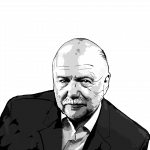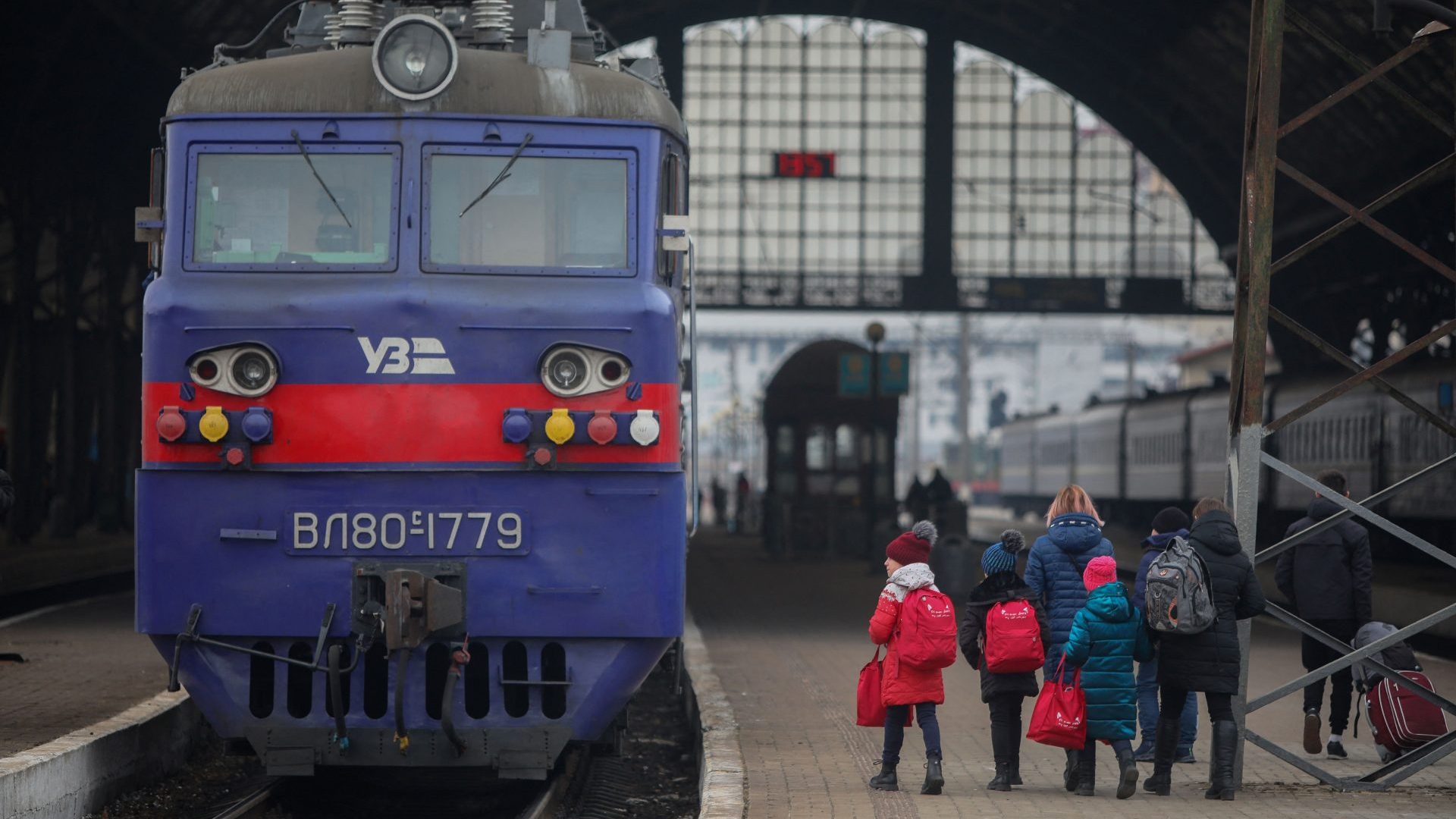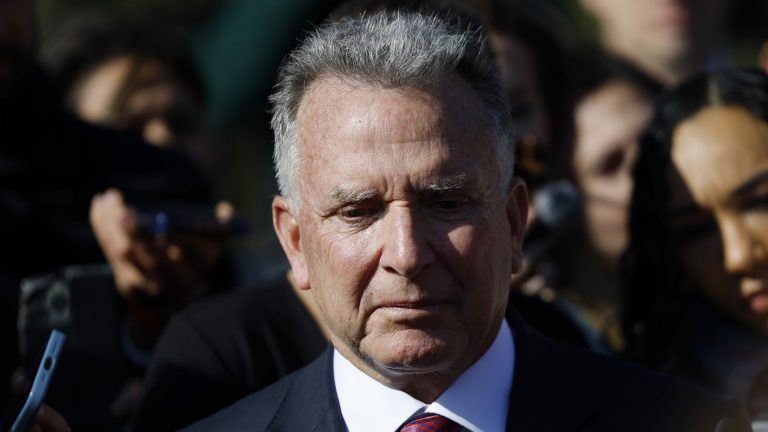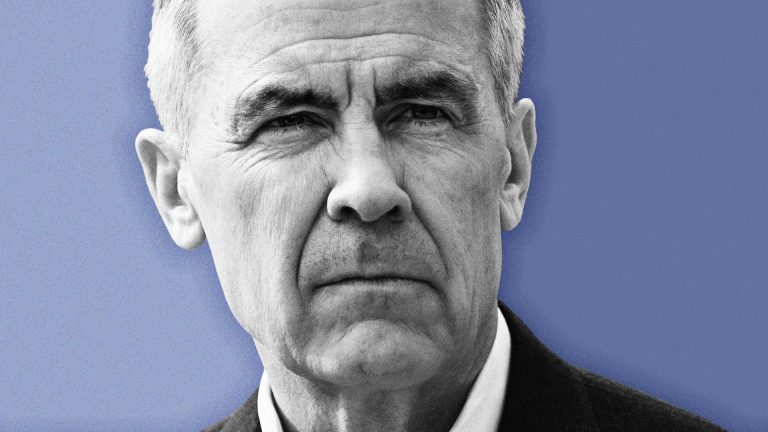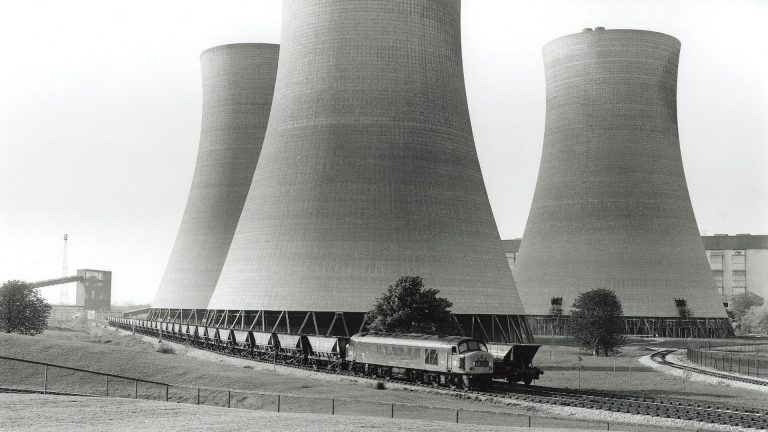On February 24, 2022, Russia stopped all Ukrainian civil aviation for the foreseeable future, as regular international flights disappeared from Ukrainian airspace. In their place came Russian missiles, directed at every region of Ukraine, bringing destruction and terror.
When the first explosions sounded at five in the morning on that February day, hundreds of thousands of Ukrainians rushed to their cars and headed for the western borders, creating 100km-long traffic jams. Even larger numbers of people, who did not have cars, rushed to the railway stations. There were tens of thousands of traumatised people at each rail hub. They had left almost everything behind. Now their only thought was to get on a train going west.
Having a ticket made no difference to your chances of boarding a train. Railway personnel could not control the waves of people storming the carriages. At some point, it was decided that only women with children and elderly people would be allowed on to trains and they did not need tickets.
Those who made it onto trains in the early days of the war will never forget the journey. Twelve people packed into compartments designed for four – they sat in silence, listening to the knock of the iron wheels, fearing new explosions from Russian missiles. The trains would stop in the middle of the fields and forests, in front of bridges. They would stand there for hours while the train drivers waited for instructions to go further.
Since the start of the war, more than 4 million Ukrainians have been evacuated from their hometowns by train. Many of them subsequently left for Europe and most of them have not returned.
We left Kyiv by car and went to Uzhhorod on the border with Slovakia. Friends there helped us with accommodation, but almost immediately our son, Anton, announced that he was going back to Kyiv. We could not stop him. “I am 19 and I decide what to do!” he said. He bought himself a ticket for the 4pm train that day.
We all went to see him off. Train no 81, “Uzhhorod-Kyiv”, was already standing at the platform. The conductors at the door of each carriage looked haggard. They had arrived from Kyiv on the same train only an hour earlier. The journey had been slow and difficult. There would be no bedlinen for Anton. There had been no time to organise it. The train’s prompt departure was the main priority.
Boxes and packages were being loaded into one of the carriages, but we saw no other passengers. We said goodbye to Anton and watched him take a seat alone in a four-berth compartment. He waved at us through the window, and I noticed that the glass had been completely covered with two-inch-wide strips of sellotape. We had done the same for our windows in Kyiv to prevent shards from flying across the room if a missile landed nearby, but we had not done the job anywhere near as thoroughly. One carriage must have required a great deal of sellotape and, I imagined, a lot of work for the exhausted conductors, who were just pulling up the steps and shutting the carriage doors.
Suddenly there was a shout and a car screeched to a halt almost on the platform. Two men leaped out and, shouting instructions to the conductor of the nearest carriage, pushed several dozen cardboard boxes onto the train.
“It’s medicine,” I heard one of the men say. “They’ll be picked up in Kyiv. What time are you likely to arrive?”
The conductor gave a tired shrug: “Who knows?”
At that time, Russia was targeting the Ukrainian railways. Missiles fell on electrical substations, bridges, stations and tracks.
When the last carriage of the train, wagging like a dog’s tail, disappeared around the bend, we stood alone on the platform. The station seemed completely empty.
The first few hours of that train journey through the Carpathian mountains are beautiful. My wife wondered whether Anton would notice. There followed an anxious wait. I kept checking the news feed. We watched as missiles struck cities all over the country.
Finally, the next morning, Anton called to say that his train had arrived more or less on time at around 9am. The railway station was tightly controlled by soldiers who checked the documents and bags of everyone going in or out. As one of the few people arriving in Kyiv, he got through quickly.
The war changed everything, including your reasons for travelling. Rail passengers could be divided into two categories: those evacuating and those returning. In most cases, the “return” was temporary. One or two family members went home to check the apartment and pick things up. My wife returned to Kyiv in May, taking a suitcase of winter things home and bringing back summer clothes. She took the same no 81 train. By that time, it was already full of passengers. Ukrainians had great faith not only in their army, but also in their railways and in those who were responsible for the system’s safety.
The railway traffic in Ukraine has not stopped for a single day during this war. I have the impression that it would be impossible to bring it to a complete halt. Trains can no longer reach areas occupied by the Russian forces, but, within days of the liberation of Kherson, for example, a passenger train arrived there.
You can blow up the tracks, but teams of workers rush to repair the damage as quickly as possible. You can blow up railway stations and kill passengers waiting for their train, as happened in Kramatorsk on April 8, 2022, when 61 people died and more than 120 were injured. But even this tragedy did not disrupt the railway connection between Kyiv and Kramatorsk, or deter people from using it.
The Ukrainian railway was constructed when the territory was part of the Russian empire. The Russians built their tracks 89mm broader than the “Stevenson gauge” used in Europe. Some historians suggest they did this to make invasion from the west more difficult. Needless to say, Soviet authorities saw no reason to change the gauge and the result is that Ukraine’s railway system is almost entirely cut off from Europe. The Mukhachevo – Košice (Slovakia) line is a notable exception.
On March 15, 2022, only three weeks after the beginning of the new Russian aggression, the first international delegation arrived in Kyiv, but because of the difference in gauge, they had to make the journey from the border on a “Ukrzaleznytzia” UZ (Ukrainian Railways) train. The prime ministers of Poland, Slovenia and the Czech Republic were the first VIP passengers from Europe. Their arrival in the capital at a time when Russian troops were still occupying the suburbs of Bucha, Borodyanka and Irpin inspired Ukrainians and strengthened their faith in victory.
Since then, hundreds of foreign politicians and diplomats have become UZ passengers. More than 300 foreign delegations have taken the train from the Polish border to Kyiv for meetings with the Ukrainian government, and then on further towards the combat zones and cities that are constantly shelled by Russian troops – to Kharkiv, Kramatorsk, Mykolaiv and Kherson.
It would be hard to find a European politician or high-ranking diplomat who does not know what a Ukrainian train’s sleeping car looks like, or who would not recognize the UZ conductors’ uniform. They are all enthusiastic about a service that continues to operate as if there was no war in Ukraine.
When he visited Ukraine as prime minister, Boris Johnson was keen to shake hands with the railway personnel on the trains he took, including the engine driver. The Finnish president said he had never enjoyed such a good night’s sleep as he had on his way to Kyiv. President Biden enjoyed the sage tea, and in January this year, UZ was given a Rail Champion prize by the European Railway Awards.
Without Ukrainian Railways, the visits of high-ranking foreigners would have been much riskier, perhaps impossible. If all those top-level meetings had taken place in border towns, or outside Ukraine, the foreign guests would have been deprived of crucial insights into the situation on the ground, and the Ukrainian people would have been deprived of essential morale-boosting moments in their extremely stressful lives.
How did Ukrainian Railways become this unshakable fortress? During the Soviet era, the railways were centrally controlled and, essentially, part of the military machine. In 1991, when Ukraine became independent, UZ became a state within a state. A state-owned joint stock company, it is the world’s sixth largest rail passenger transporter and, at least until the start of the war, the seventh largest rail freight transporter. And yes. It is a monopoly.
The passenger network is relatively simple, with several trains a day between Kyiv and regional capitals, and some other large cities. Then there are networks of electric trains serving the areas around each regional centre. Until 2012 almost all trains ran at night. All train journeys lasted from teatime to breakfast. It didn’t seem to matter what the distance was. Then in 2012 daytime “express” trains were introduced on many routes. They proved popular with people travelling on business. Leaving Kyiv at six in the morning, you could be in Kharkiv by midday.
As in every area of Ukrainian public life, top management has been accused of corruption. For years, passengers complained about poor service – tatty or damp linen in the sleeping cars and the lack of air conditioning or heating. During the 90s and early 2000s, it was often simply impossible for ordinary people to buy tickets. They were being bought up by insiders and resold at inflated prices. In 2013, this was stopped by the introduction of named tickets, and you must now show a photo ID to get on a train.
Despite corruption, UZ infrastructure has gradually improved, mostly fuelled by money made on the freight side of the industry. Responsibility for the railway system was considered one of the toughest government-appointee jobs. Perhaps the country’s most famous “railway minister” was George Kirpa. In the early 2000s, he was the general director of UZ, before becoming minister of transport and communications. Under his leadership, dozens of railway stations were renovated and railway bridge construction projects were launched.
It is not certain how he died. He either shot himself or was murdered at the end of 2004, during the Orange Revolution. There had been rumours that Kirpa had been preparing to stand in the 2004 presidential election.
Under Kirpa, the UZ had 400,000 employees. Most of them would have voted for their “railway president”, but something went wrong. The precise circumstances of his death remain a mystery.
Since then, UZ’s top managers tend to remain in the job only for short periods; it is as if someone in the president’s office is afraid that the Ukrainian railway industry will again nominate its own presidential candidate.
In late February, Oleksandr Kamyshin left his post as UZ’s general director after less than a year. He has now been tasked with developing cooperation between UZ and European railway structures. In March, Yevhen Lyashchenko was appointed for a two year term.
Currently, up to 99% of Ukrainian trains depart on time and 96% arrive on time. I spent much of the autumn of 2022 on the German Bundesbahn. Of the more than 20 trains I took, only one reached its destination according to the schedule.
Wartime conditions impose discipline on all technological and logistics processes. They suggest that the price for any mistake – for any moment of unjustified relaxation – could be too high.
The Ukrainian railway works like a Swiss clock because it works in extreme conditions. Since February 2022, more than 360 UZ workers have been killed while on duty and more than 800 have been injured. Yet railway personnel continue to volunteer for work on trains sent to evacuate civilians from frontline areas or to deliver equipment to the army.
On March 4, 2022, a Russian missile exploded over the main children’s hospital in Kyiv. The windows and doors of the central building shattered. The young patients were in a bomb shelter at the time, but their evacuation by train began a few hours later. Information about the train and the route it would take was released on a strictly need-to-know basis, but we know that the operation to evacuate the children was successful.
UZ has even seen some improvements in its services since the all-out aggression began. Before the war, 100 sleeping cars adapted for wheelchairs were ordered.
From March 1 this year, UZ renamed the tea offered to passengers. It is now called “Biden Tea”, in appreciation of the US president’s praise for the beverage.
Routes abandoned due to hostilities have been revived wherever possible, including the Slobozhansky Express, which runs from Kharkiv, via Sumy, to Konotop. This route runs parallel to the border with Russia and the frontline.
Now UZ managers are also working to revive passenger routes shut down for economic reasons. For many Ukrainians, trains seem to be safer and more reliable than cars or buses. The question is, where will the money come from? Although ticket prices seem high to most Ukrainians, by European standards they are very low. Anton’s Uzhhorod-Kyiv ticket cost about $20. Clearly, passenger travel was not keeping the railways going; it was freight that paid for the system and its maintenance. Much of that freight originated from the heavy industry in territories that are now either under Russian occupation. Many of those areas have now been devastated – or drowned – by the effects of Russia’s aggression.
Andrey Kurkov is a Ukrainian author of 19 novels, including the bestselling Death and the Penguin

